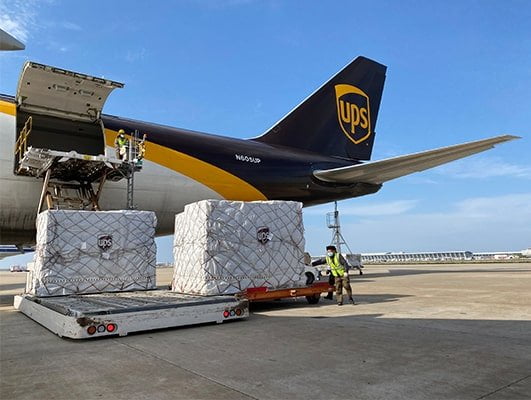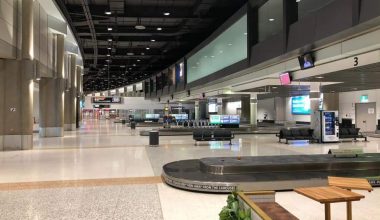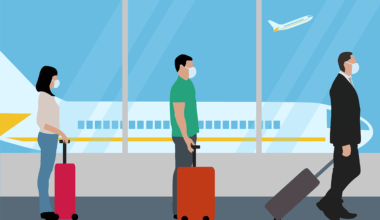As the COVID-19 health crisis grounded all commercial aviation operations, there was a segment of the industry that joined the fight against Coronavirus. Cargo aircraft filled with 100 tons of medical gear were in high demand even during the lockdowns.
The International Air Cargo Association (TIACA) found fully mobilized during the unprecedented calamity and recognized fully by governments and regulators worldwide.
When the TIACA Chairman Steven Polmans supported IATA’s appeal to remove travel restrictions on air cargo, the governments around the world responded positively.
Air cargo emerged as a superhero in the fight against COVID-19 and found circulating around the world, transporting necessities, food, and medical gear.
Air Cargo took center stage during Covid-19 outbreak
Cargo’s revenue contribution made a huge difference for airlines, and it is now creating a standard for future profitability. The aircraft served more than its anticipated demand in the aviation industry. The air Cargo sector has remained resilient and value-generating during an uncertain situation.
U.S. Airlines took a step forward as the catastrophic Pandemic continued to dismantle the aviation industry. And at the end of March, the cost of sending Cargo across the Pacific got tripled.
Despite passenger traffic almost disappearing, global cargo demand was not affected by social distancing and other citizen restrictions.
As the economic crisis continues, it becomes apparent that Cargo is now the aviation industry’s priority.
Airlines will now treat Cargo as their core business as it will represent airline revenue in the coming years.
Massive Air Cargo shipment by volume was reported
An-225 Mriya is the world’s mightiest Cargo aircraft landed in Warsaw, Poland, on April 13, 2020, filled with 81.3 tons of epidemic prevention material. The aircraft lifted off from Tianjin, China, loaded with personal protective gear, such as masks and medical testing equipment. It was the largest cargo shipment by air that carried four-fifths of the giant airplane’s cavernous hold.
“Such a massive volume of goods has never been transported via Cargo in the history of aviation,” reported the American Journal of Transportation.
Passenger fleets transformed into Cargo to meet the shortfall
Amid the unprecedented crisis, around 20 airlines have used their passenger aircraft fleets to supplement the continuous Cargo operations around the globe. Cargo was loaded into the main cabin, protected with cargo netting, and distributed across the seats to create the balance.
Before this ravaging Pandemic, passenger aircrafts carried most of the heavy Cargo. It was noted that annually 40% of air cargo is transported in the belly hold of passenger aircraft. The other 60% is typically carried with the help of freighter aircraft.
But with the Covid-19 at hand, passenger aircraft offered their support. Not only were heavy-load cargos being flown in those planes, but some were also used as cargo-only dedicated planes.
Airlines like Delta and Cathay Pacific utilized their passenger planes to meet the shortfall. At this unprecedented time, United Airlines also supported the cargo operations by offering its passenger fleets. United Airlines stepped into a new normal with its cargo operations and helped many states in the U.S. via transporting critical goods at the beginning of the crisis.
More Cargo-only flights
Amid the Pandemic, many airlines that have never done cargo-only flights in decades offered their fleets or started their cargo operations. These airlines have added more destinations and raised the number of cargo-only flights to transport the necessary medical goods within or outside the U.S.
United Airlines did about 1,100 cargo flights in May, and more flights are scheduled for June.
Southwest Airlines offered cargo-only charter operations on its Boeing 737s to move much-needed products to those in need. The Cargo shipped in the cavernous hold of the 737s, with pilots and other team members onboard during the flights.
American airline cargo operated around 140 widebody weekly cargo flights, and 296 flights are scheduled in June.
This creative idea helped airlines created a low-fuel environment. Utilizing fuel-efficient and larger aircraft, where usually two freight aircraft would be used, only one passenger aircraft is necessary. Since passenger traffic had declined by 94% and airplanes were flying almost empty, air cargo had become critical for the resilience of both airports and airlines.
Many Cargo airlines have reaped the benefits
The global Pandemic has lifted the revenues of many cargo carriers. Atlas Air’s revenue had swung to a $23.4 million in the first quarter from a loss of $30 million a year ago in the same period.
Cargo airlines that flown for Amazon have soared on revenue increases. These cargo carriers have made a profit of 8.6% in the first quarter and 50% in the second quarter.
Focus on Essential Air Cargo Operations
Air cargo has become the lifeline of the aviation industry and trade worldwide due to the Coronavirus pandemic. The current crisis has brought the air cargo in the spotlight and opened doors for air cargo and airlines to innovate like never before.
It will take about two to three years for the survivors of aviation industry to recover from the large financial impact of COVID-19. For commercial airlines how they will manage the next three years will determine their position once the crisis is over.
Airports must acknowledge the importance of cargo handling facilities as core strategic assets. The U.S. Midwestern airports are developing modern, cargo-centric facilities, and exceptional roadway connections. They are luring the eastern airport business profits away with their advanced cargo operations.
There is less contact with packages and social-distancing required in cargo operations. Plus, vigorous I.T. and A.I. intervention can easily be installed and operated, which is not easy with passengers.
Aviation authorities must realize that Cargo is a core business now, and investing in cargo hiring, training, and management is the need of the century. Cargo professionals must get the resources they require to deal directly with all stakeholders in the air cargo supply chain worldwide.




